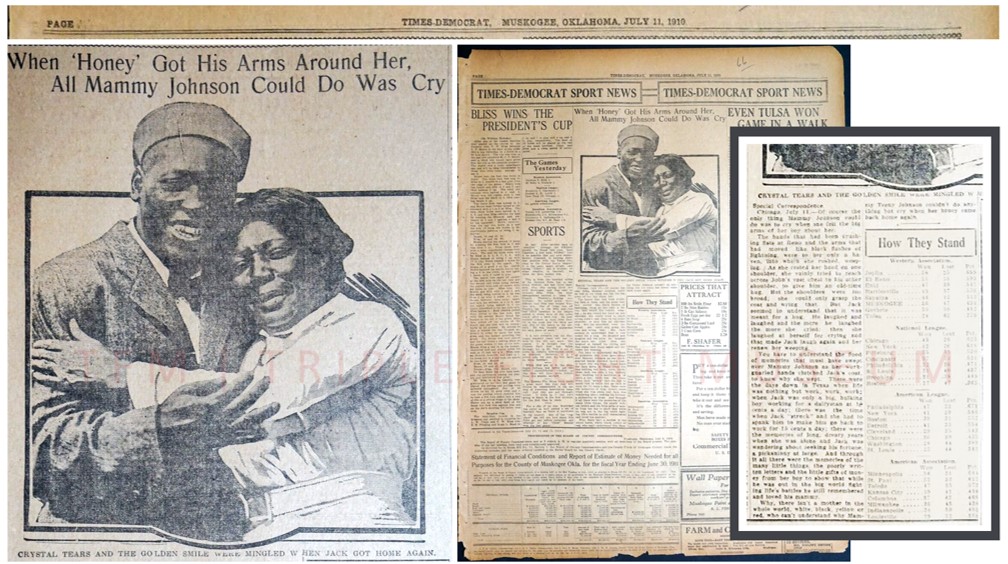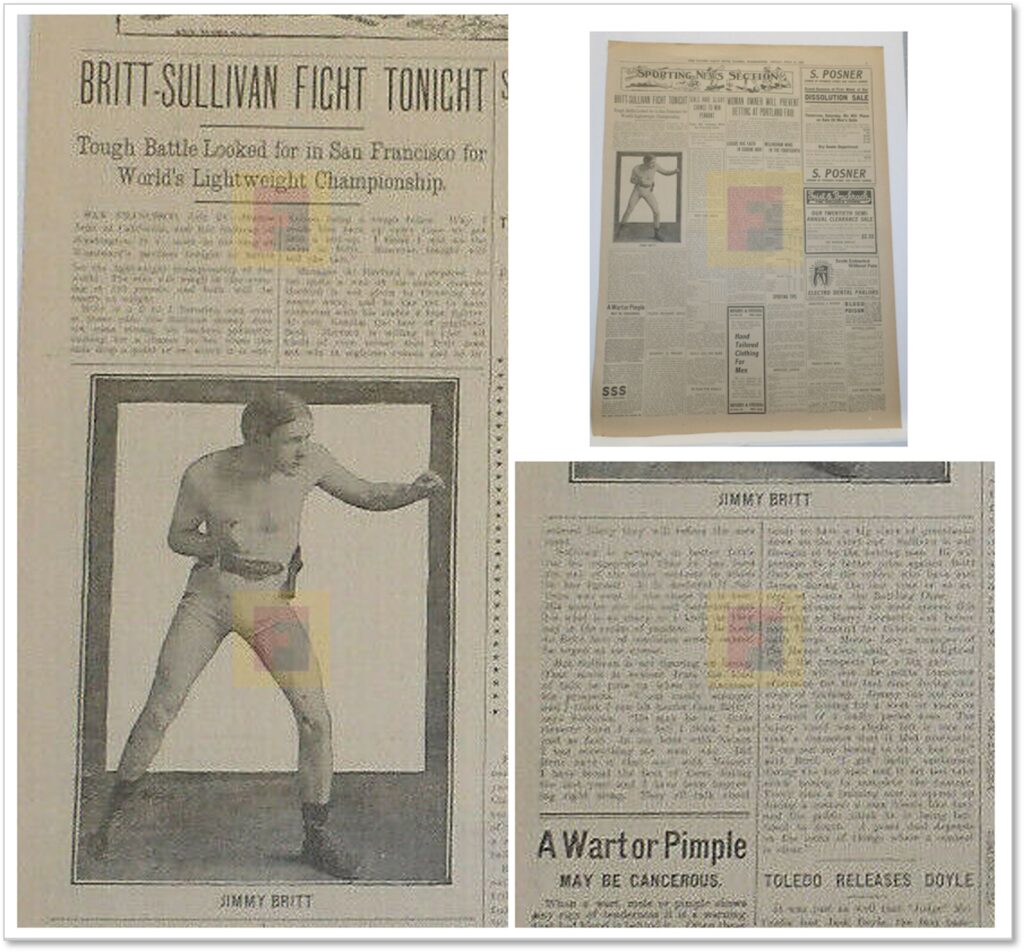Featuring Fights and Fighters that Mattered (1890 - 1929): Fights in Rings | Fights Among Nations | Fights for Equality and Justice
Famous Boxers and Their Moms
Series No. 01-001-JackJohnson-001

The caption beneath the photograph reads: CRYSTAL TEARS AND THE GOLDEN SMILE WERE MINGLED WHEN JACK GOT HOME AGAIN.
The Boxer and Mom Story as Reported in its Day
Below is a transcript of the article appearing beneath the photograph of Jack Johnson and embracing his mother in the newspaper shown above. The article is one of many newspapers articles held in the TFM Collection that provide evidence of the breadth and depth of original media coverage devoted to the life and times of boxers, both in and outside the ring at the dawn of the twentieth century.
Special Correspondence
Chicago, July 11 – Of course the only thing Mammy Johnson could do was to cry when she felt the big arms of her boy about her.
The hands that had been crushing fists at Reno and the arms that had moved like black flashes of lightning were to her only a haven, into which she rushed, weeping. As she rested her head on one should, she vainly tried to reach across Joh’s vast chest to his other shoulder, to give him an old-time hug. But the shoulders were too broad; she could only grasp the coat and ring that. But Jack seemed to understand that it was meant for a hug. He laughed and laughed and the more he laughed the more she cried; then she laughed at herself for crying and that made Jack laugh again and lessened her weeping.
You have to understand the flood of memories that must have swept over Mammy Johnson as her work-gnarled hands clutched Jack’s coat to know why she wept. There were the days down in Texas when life was nothing but work, work, work; when Jack was only a big, hulking boy working for a dairyman at 10 cents a day; there was the time when Jack “struck” and she had to spank him to make him go back to work for 15 cents a day; there were the memories of long, dreary years when she was alone and Jack was wandering about seeking his fortune, a pickaninny at large. And through it all there were the memories of the many little things: the poorly written letters and the little gifts of money from her boy to show that while he was out in the big world fighting life’s battles he still remembered and loved his mammy.
Why, there isn’t a mother in the whole world, white, black, yellow or red, who can’t understand why Mammy Teeny Johnson couldn’t do anything but cry when her honey came back home again.
Putting the News into Context and Comparing Papers
A week after destroying the hopes of boxing fans who wanted Jim Jeffries to restore the World’s Heavyweight Title to the White race, Jack Johnson paid his mother a visit. A Muskogee, Oklahoma newspaper covered the story and featured a photograph showing the moment mother and son were reunited. The newspaper page, along with its article of the Johnsons’ reunification, is among numerous newspapers held by The Museum which covered the life, times and battles of Jack Johnson, the first Black man to hold what was then the most coveted title in professional sports.
In the spring of 2023, TFM acquired a page of the July 11, 1910 edition of the TIMES-DEMOCRAT, published for Muskogee, Oklahoma. The newspaper page contains a rather flattering account of the moment Jack Johnson and his mother were reunited. The newspaper identifies the mother as Mammy Johnson.
The team at TFM was surprised to discover the article, with its prominent positioning of the photograph of Jack Johnson and his mother. A very different post-fight coverage appears in a St. Louis edition of the TIMES-DEMOCRAT, published three years earlier. In the TFM Collection of newspapers covering championship bouts in 1907 is a full-page of the TIMES-DEMOCRAT published for St. Louis. As shown below, in its promotion of an upcoming fight between Jimmy Britt vs. Sullivan, the paper refused to acknowledge Joe Gans, a Black American from Baltimore, as the World’s Lightweight Champion, a title which Gans held from 1902 through September 9, 1908. Instead, the paper referred to Jimmy Britt, an Irish-American lightweight contender, as the champion, despite Britt having lost a recent fight to Gans and having never attained world recognition of the division title. Such were the times in America, in the 1900s.
An Example of Racial Bias in 1907 TIMES-DEMOCRAT St. Louis, Missouri

Have a comment or question? Please contact us.
in the fight for good